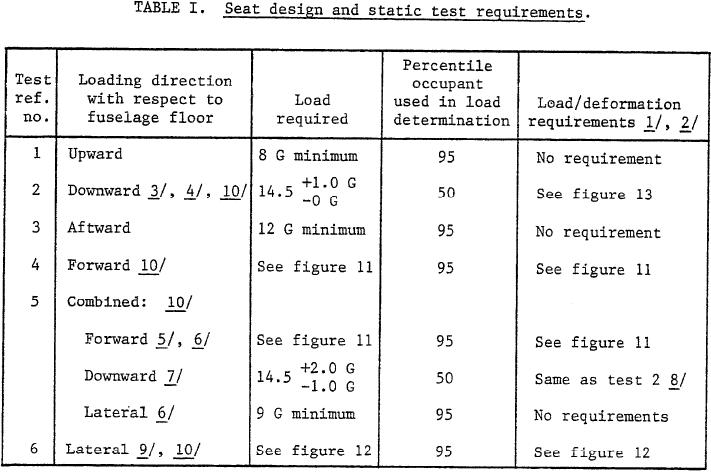 |
|||
|
Page Title:
Table I. Seat Design and Static Test Requirements |
|
||
| ||||||||||
|
|  MIL-S-8551O(AS)
The aircraft floor or bulkhead should be deformed as detailed in figures
15 and 16 simultaneously with, or prior to the conduct of all static tests
and kept deformed throughout load application.
Plastic deformation is permissible; however, structural integrity must be
maintained.
If more than one load-limiter setting is provided, a representative sample
of settings spanning the range of loads should be tested.
Subsequent to the stroking of the vertical energy-absorbing device, cockpit
seats should carry a static load of 25 G, based on the effective weight of
the 95th-percentile clothed and equipped occupant per table III plus seat
without loss of attachment to the basic structure except when the seat pan
has stroked to and is supported by the floor.
In the event that no load-limiting device is used in the forward direction, a
20 G load for cabin seats and a 25 G load for cockpit seats may be used for
this combined loading.
For seats employing vertical guides which could distort under combined loading
and cause binding, the maximum forward and lateral loads should be reached
prior to initiation of stroking. This sequence demonstrates whether the seat
will stroke downward after transverse loads are applied.
If more than one load-limiter setting is provided, the highest load should
be tested.
24
|
|
Privacy Statement - Press Release - Copyright Information. - Contact Us |